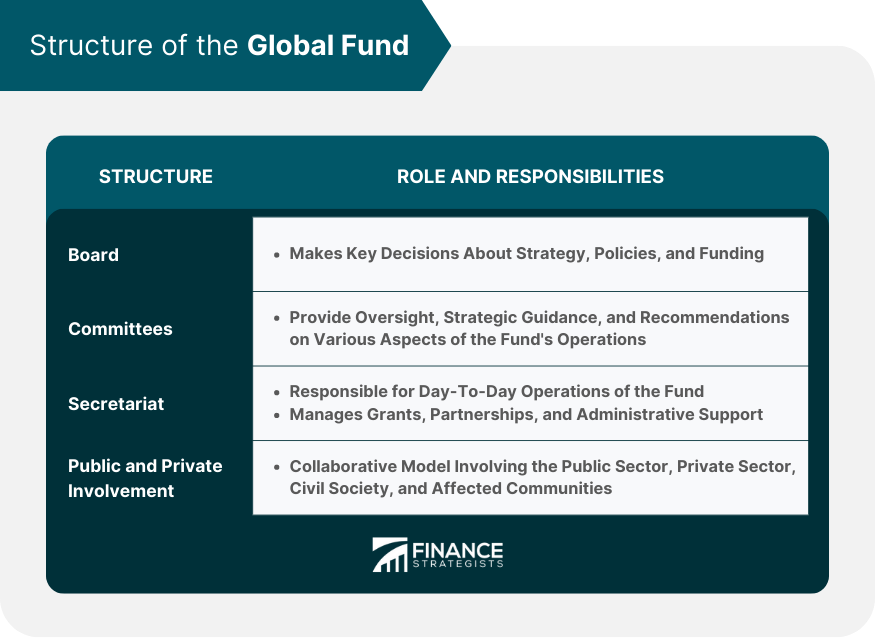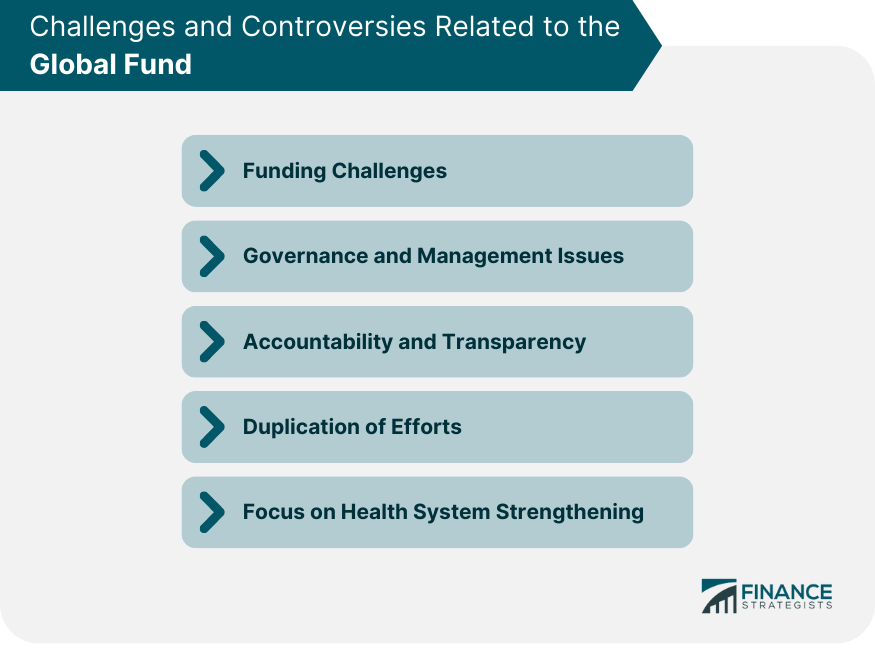The Global Fund is an international financing organization dedicated to ending the epidemics of HIV/AIDS, tuberculosis, and malaria. Launched in 2002, the fund marshals and disburses resources to combat these three devastating diseases that disproportionately affect the world's poorest populations. The Global Fund operates as a partnership between governments, civil society, the private sector, and affected communities. The genesis of the Global Fund traces back to the early 21st century when these epidemics were causing widespread devastation, particularly in low-income countries. The severity of the situation led to the call for a global war chest to combat the diseases. The G8 Summit in Okinawa, Japan, in 2000 marked the first significant step towards the formation of the Global Fund. The official launch followed two years later, setting the stage for a global response to the trio of diseases. The primary mission of the Global Fund is to accelerate the end of AIDS, tuberculosis, and malaria as epidemics. It works towards this mission by providing support to programs run by local experts in countries and communities most in need. These programs focus on prevention, treatment, and care services for the affected and at-risk populations. Additionally, the fund also supports health system strengthening to ensure sustainable disease control. At the apex of the Global Fund's structure is the Board, which comprises representatives from donor and recipient governments, non-governmental organizations, the private sector, and affected communities. The Board makes key decisions about strategy, policies, and funding. Three standing committees support the Board in its function - the Audit and Finance Committee, the Strategy Committee, and the Ethics and Governance Committee. These committees provide oversight, strategic guidance, and recommendations on various aspects of the fund's operations. The Global Fund Secretariat, based in Geneva, Switzerland, is responsible for the day-to-day operations of the fund. It manages grants, partnerships, and resource mobilization and provides administrative support to the Board. The Board sets the strategic direction and approves the budget and funding. The Committees oversee specific aspects of the fund's functioning, while the Secretariat carries out the implementation. All these structures work synergistically to ensure the fund's mandate is efficiently executed. The Global Fund is a testament to the power of partnerships. It brings together the public sector (governments), the private sector (companies), civil society (NGOs), and affected communities in a unique collaborative model. This partnership helps leverage the strengths of each sector, fostering innovation and ensuring accountability and effectiveness in disease control efforts. The Global Fund concentrates its efforts on three major diseases - HIV/AIDS, tuberculosis, and malaria. It supports a wide range of programs, from HIV prevention and antiretroviral therapy to TB case finding and drug-resistant TB treatment and from insecticide-treated mosquito net distribution to seasonal malaria chemoprevention. The Global Fund operates primarily as a financier. It solicits applications for funding from countries and awards grants based on the evaluation of these applications. The grants are then used to support disease control programs designed and run by local experts. This approach ensures that the fund's resources are directed towards interventions that are most likely to succeed in the specific local context. The Global Fund's reach is truly global. It supports programs in more than 100 countries, focusing primarily on low- and middle-income nations where the burden of HIV/AIDS, tuberculosis, and malaria is the highest. The fund's investments are data-driven, with resources allocated based on disease burden, economic capacity, and other relevant factors. The Global Fund partners with various global health organizations to maximize its impact. Key partners include the World Health Organization (WHO), UNAIDS, the Stop TB Partnership, and the Roll Back Malaria Partnership. These collaborations help the Global Fund align its strategies with global health priorities, share best practices, and ensure efficient use of resources. The Global Fund relies on voluntary contributions from governments, the private sector, and philanthropic organizations. This funding model makes the organization vulnerable to fluctuations in donor commitments, which can impact the continuity and scale of its programs. The Global Fund has faced criticism for its governance and management structures, with some arguing that they are overly complex and bureaucratic. The organization has implemented several reforms in response to these concerns, including streamlining decision-making processes and strengthening its risk management framework. Some of the main criticisms and controversies surrounding the Global Fund include concerns about the fund's accountability and transparency, the potential for duplication of efforts with other global health initiatives, and the adequacy of its focus on health system strengthening. The Global Fund, an international partnership between governments, civil society, and the private sector, plays a vital role in fighting HIV/AIDS, tuberculosis, and malaria. It operates through a structured, data-driven approach to finance programs run by local experts in affected countries, focusing on prevention, treatment, and care services. The fund's structure involves a Board, Committees, and a Secretariat, each with distinct roles and responsibilities, ensuring effective and efficient operation. The Global Fund's work represents an essential part of the global health infrastructure. Its contributions extend beyond disease-specific outcomes to include strengthening health systems, promoting access to healthcare, and fostering international cooperation on health issues. Its approach recognizes that health is a global public good and that collective action is needed to combat global health threats. The Global Fund embodies the principle that health is a right, not a privilege. Through its efforts, millions of people around the world have received life-saving treatment and care.What Is a Global Fund?
Structure of the Global Fund
Governance and Decision-Making Structures
Board
Committees
Secretariat
Role and Responsibilities of Each Structure
Public and Private Sector Involvement

Operations of the Global Fund
Areas of Focus (HIV/AIDS, Tuberculosis, Malaria)
Method of Operation (Grant Making)
Geographical Reach of the Global Fund
Partnerships With Other Global Health Organizations
Challenges and Controversies Related to the Global Fund

Funding Challenges
Governance and Management Issues
Criticisms and Controversies Related to the Global Fund
Final Thoughts
Global Fund FAQs
The Global Fund is an international financing organization established in 2002 to combat HIV/AIDS, tuberculosis, and malaria. It operates through partnerships between governments, civil society, the private sector, and affected communities to support programs run by local experts in countries most in need.
The Global Fund operates primarily by providing financial grants. It invites applications from countries for funding, evaluates these applications, and then provides grants to support disease control programs that are designed and run by local experts. This approach ensures that the resources are directed towards interventions most likely to succeed in the specific local context.
The Global Fund partners with a wide range of entities, including governments, civil society organizations, the private sector, and affected communities. It also collaborates with several global health organizations such as the World Health Organization (WHO), UNAIDS, the Stop TB Partnership, and the Roll Back Malaria Partnership.
The Global Fund has significantly contributed to the global fight against HIV/AIDS, tuberculosis, and malaria. Since its inception, it has disbursed over $45 billion in grants and saved millions of lives. Its investments have helped reduce the incidence and death rates of these three diseases.
Some of the key challenges faced by the Global Fund include securing sufficient and consistent funding, navigating complex governance and management structures, and addressing criticisms related to accountability and transparency. Despite these challenges, the Global Fund continues to refine its strategies and strengthen its operations to meet its mission effectively.
True Tamplin is a published author, public speaker, CEO of UpDigital, and founder of Finance Strategists.
True is a Certified Educator in Personal Finance (CEPF®), author of The Handy Financial Ratios Guide, a member of the Society for Advancing Business Editing and Writing, contributes to his financial education site, Finance Strategists, and has spoken to various financial communities such as the CFA Institute, as well as university students like his Alma mater, Biola University, where he received a bachelor of science in business and data analytics.
To learn more about True, visit his personal website or view his author profiles on Amazon, Nasdaq and Forbes.











